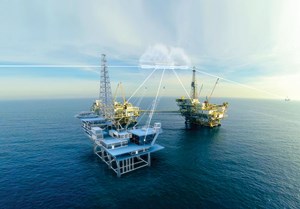Collaboration, confidence in UK energy sector essential for digital twins to deliver energy transition benefits
(WO) – DNV examines how digital twins can support the UK’s net-zero objectives in a new report, emphasizing the critical role of industry collaboration and trust in ensuring the substantial contribution of digital twins to the energy transition.
This report includes interviews with regulators, asset owners, consultancies, and government innovation agencies, revealing crucial insights into the UK's path to net zero. The report, Connected Digital Twin Insights: Rising to the Challenge across the UK Energy Sector and Beyond, explores the opportunities, benefits, barriers, and risks of connected digital twins in the UK energy sector and looks for the answer to a fundamental question – “How can I trust my digital twin?”
The UK’s first Energy Digitalization Strategy outlines the necessity of a digitized energy system, as only intelligent data-based systems can accommodate the influx of millions of new energy flows per second from emerging low-carbon technologies that will be connected to the grid in the coming years.
With the country's energy CAPEX expected to rise significantly, as projected in DNV’s Energy Transition Outlook UK 2024, digitalization offers substantial cost-saving opportunities through smarter energy management, against a backdrop of volatility, unpredictability, and complexity. However, trust in the technology and data integrity is vital for the successful adoption of digital twins, with cyber security being a significant concern.
With this in view, the report recommends creating a "National Digital Twin" to simulate and interconnect assets, processes, and systems – underscoring the need for trust and collaboration across the sector, essential for effective data sharing and integration.
Hari Vamadevan, Senior Vice President, and Regional Director UK & Ireland, Energy Systems at DNV, states that, “The UK energy sector stands on the brink of a remarkable transformation, leading us to an unprecedented level of interactivity and interconnectivity. Technologies like connected digital twins will underpin this transformation; the question becomes one of how the sector can harness their potential and add new impetus into the UK’s stalling energy transition.”
Justin Anderson, Director of the Digital Twin Hub at Connected Places Catapult and one of the interviewees, outlines that, “Collaborations in data sharing will play a pivotal role in realizing the benefits of connected digital twins, therefore enabling the role they can plan in transforming the future energy system.”
Corinna Jones, Head of Innovation, National Gas, whose flagship FutureGrid digital twin project provided a high-profile use case for the report, explains that digital twins are of “fundamental importance”, giving a use case with hydrogen integration. “Whilst the climate benefits of using hydrogen as a low-carbon fuel are clear, the feasibility of making the transition using the current infrastructure still needs to be demonstrated. Before introducing hydrogen into the existing national gas system, we need to understand the impact of the cleaner gas on pipes and assets to ensure safe, efficient, and cost effectiveness operations.
“Digital twins are a key technology to help us achieve that understanding. Our FutureGrid test site located at Spadeadam – DNV’s Research and Testing Centre – offers the perfect environment to demonstrate how digital twin technology can provide a robust method of managing hydrogen in the UK’s existing gas infrastructure. We see digital twin technologies as a catalyst in helping organizations like us manage the complexities of operating the National Transmission System with hydrogen.”
Hari Vamadevan, concludes, "At DNV, our belief is that trust is key to fostering digital twin adoption: finding the right balance between openness and security will be enabled by taking direct learnings from the industry, about building frameworks and standards to ensure assets are also inspected, tested, or certified in the digital space, as well as the physical.”



